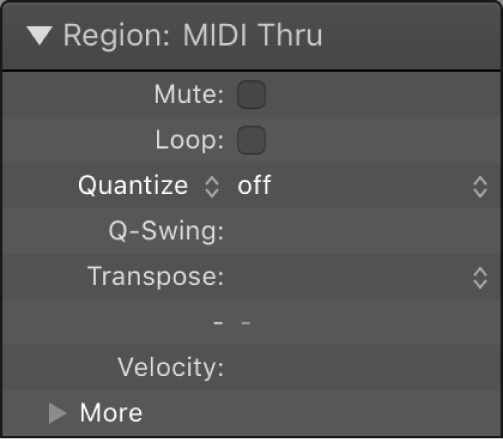Slip Right by Nudge Value ⌃⌥→
Move the content of the region “back” (make the sound happen later). Rotating the contents of the region is possible, as well as making the region larger or smaller.
Move regions in the Logic Pro Tracks area — Apple Support
You can slip regions, which moves the content of the region left or right by the nudge value without moving the boundaries of the region. The content effectively moves inside the region, which remains stationary. Slipping a region is possible only when the source content exceeds the length of the region by the amount you slip (or greater).
